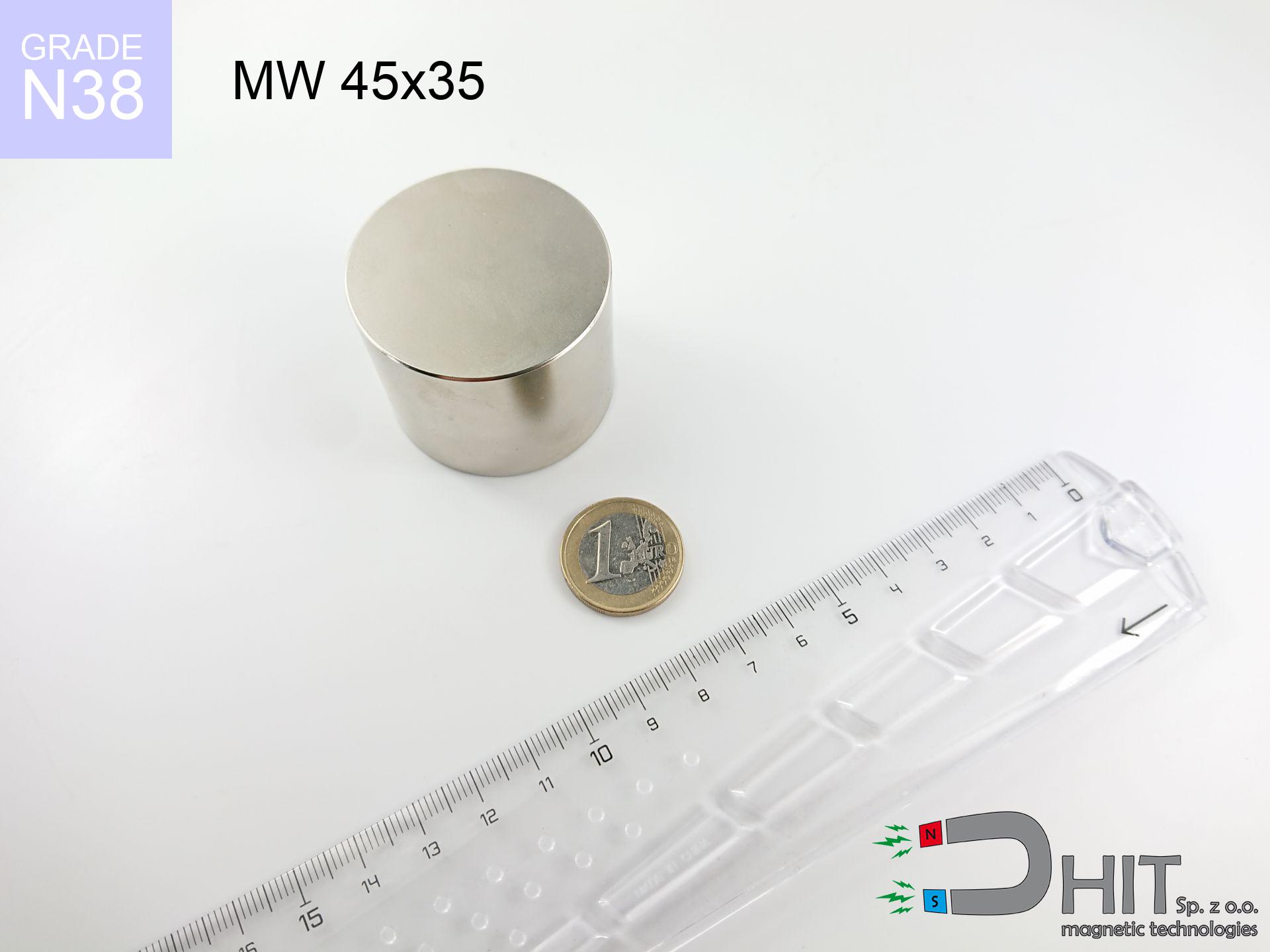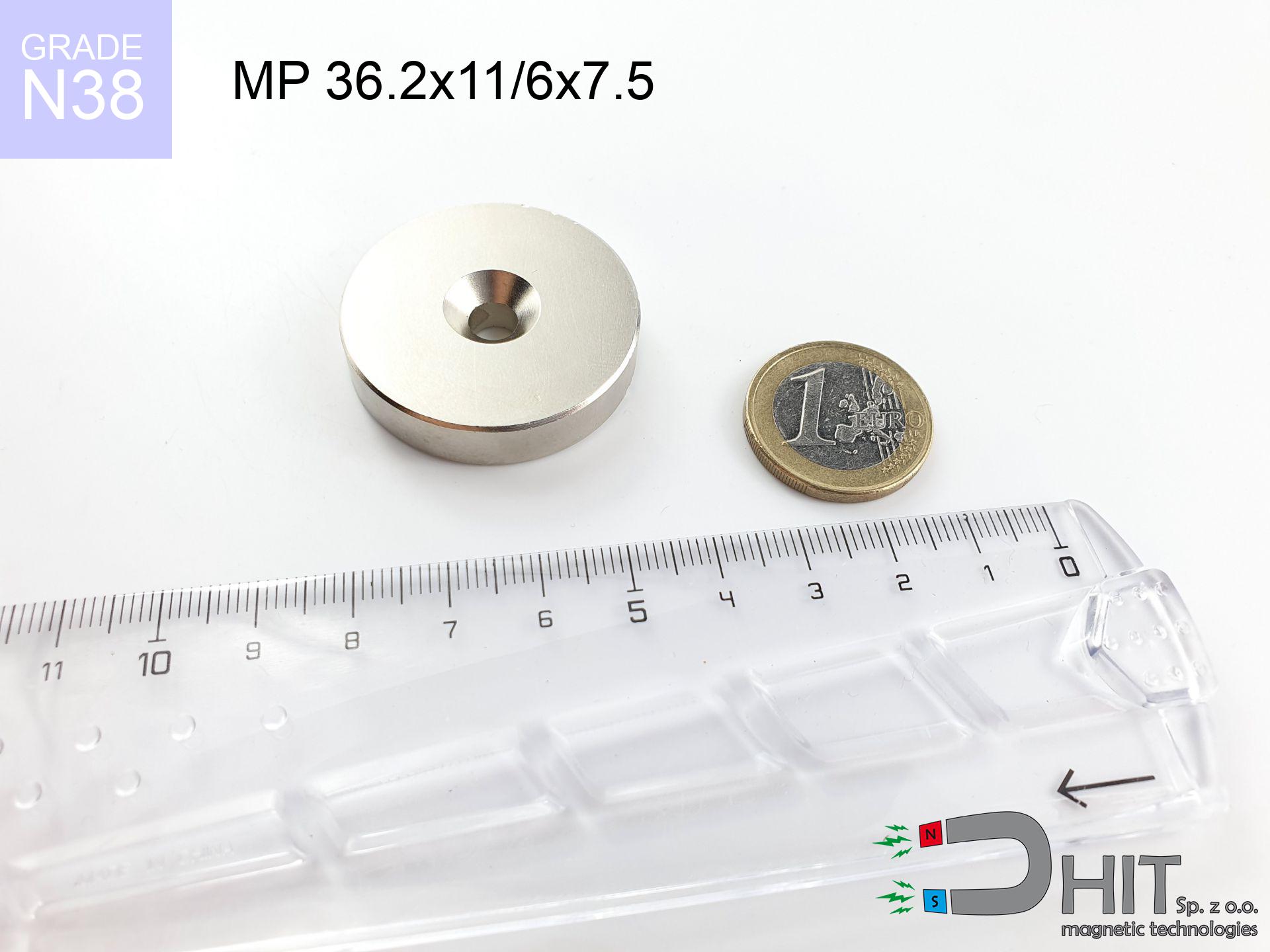SMZR 32x200 / N52 - magnetic separator with handle
magnetic separator with handle
Catalog no 140240
GTIN/EAN: 5906301813484
Diameter Ø
32 mm [±1 mm]
Height
200 mm [±1 mm]
Weight
1210 g
Magnetic Flux
~ 10 000 Gauss [±5%]
615.00 ZŁ with VAT / pcs + price for transport
500.00 ZŁ net + 23% VAT / pcs
bulk discounts:
Need more?
Pick up the phone and ask
+48 888 99 98 98
otherwise get in touch by means of
form
the contact section.
Specifications and structure of magnets can be checked using our
online calculation tool.
Order by 14:00 and we’ll ship today!
Technical of the product - SMZR 32x200 / N52 - magnetic separator with handle
Specification / characteristics - SMZR 32x200 / N52 - magnetic separator with handle
| properties | values |
|---|---|
| Cat. no. | 140240 |
| GTIN/EAN | 5906301813484 |
| Production/Distribution | Dhit sp. z o.o. |
| Country of origin | Poland / China / Germany |
| Customs code | 85059029 |
| Diameter Ø | 32 mm [±1 mm] |
| Height | 200 mm [±1 mm] |
| Weight | 1210 g |
| Material Type | Stainless steel AISI 304 / A2 |
| Magnetic Flux | ~ 10 000 Gauss [±5%] |
| Size/Mount Quantity | 2xM8 |
| Polarity | circumferential - 6 poles |
| Casing Tube Thickness | 1 mm |
| Manufacturing Tolerance | ±1 mm |
Magnetic properties of material N52
| properties | values | units |
|---|---|---|
| remenance Br [min. - max.] ? | 14.2-14.7 | kGs |
| remenance Br [min. - max.] ? | 1420-1470 | mT |
| coercivity bHc ? | 10.8-12.5 | kOe |
| coercivity bHc ? | 860-995 | kA/m |
| actual internal force iHc | ≥ 12 | kOe |
| actual internal force iHc | ≥ 955 | kA/m |
| energy density [min. - max.] ? | 48-53 | BH max MGOe |
| energy density [min. - max.] ? | 380-422 | BH max KJ/m |
| max. temperature ? | ≤ 80 | °C |
Physical properties of sintered neodymium magnets Nd2Fe14B at 20°C
| properties | values | units |
|---|---|---|
| Vickers hardness | ≥550 | Hv |
| Density | ≥7.4 | g/cm3 |
| Curie Temperature TC | 312 - 380 | °C |
| Curie Temperature TF | 593 - 716 | °F |
| Specific resistance | 150 | μΩ⋅cm |
| Bending strength | 250 | MPa |
| Compressive strength | 1000~1100 | MPa |
| Thermal expansion parallel (∥) to orientation (M) | (3-4) x 10-6 | °C-1 |
| Thermal expansion perpendicular (⊥) to orientation (M) | -(1-3) x 10-6 | °C-1 |
| Young's modulus | 1.7 x 104 | kg/mm² |
Elemental analysis
| iron (Fe) | 64% – 68% |
| neodymium (Nd) | 29% – 32% |
| boron (B) | 1.1% – 1.2% |
| dysprosium (Dy) | 0.5% – 2.0% |
| coating (Ni-Cu-Ni) | < 0.05% |
Ecology and recycling (GPSR)
| recyclability (EoL) | 100% |
| recycled raw materials | ~10% (pre-cons) |
| carbon footprint | low / zredukowany |
| waste code (EWC) | 16 02 16 |
View also proposals
Pros as well as cons of neodymium magnets.
Benefits
- They have stable power, and over more than ten years their attraction force decreases symbolically – ~1% (in testing),
- Neodymium magnets remain remarkably resistant to loss of magnetic properties caused by external field sources,
- By using a reflective layer of nickel, the element presents an nice look,
- Magnetic induction on the working part of the magnet turns out to be exceptional,
- Made from properly selected components, these magnets show impressive resistance to high heat, enabling them to function (depending on their shape) at temperatures up to 230°C and above...
- Possibility of precise forming and adapting to specific applications,
- Fundamental importance in advanced technology sectors – they are utilized in magnetic memories, motor assemblies, medical equipment, as well as multitasking production systems.
- Thanks to their power density, small magnets offer high operating force, in miniature format,
Weaknesses
- At strong impacts they can break, therefore we recommend placing them in special holders. A metal housing provides additional protection against damage and increases the magnet's durability.
- Neodymium magnets decrease their force under the influence of heating. As soon as 80°C is exceeded, many of them start losing their power. Therefore, we recommend our special magnets marked [AH], which maintain durability even at temperatures up to 230°C
- They rust in a humid environment - during use outdoors we advise using waterproof magnets e.g. in rubber, plastic
- Due to limitations in creating nuts and complicated forms in magnets, we propose using casing - magnetic holder.
- Potential hazard resulting from small fragments of magnets are risky, in case of ingestion, which gains importance in the context of child health protection. Furthermore, tiny parts of these products can disrupt the diagnostic process medical when they are in the body.
- With budget limitations the cost of neodymium magnets is a challenge,
Lifting parameters
Magnetic strength at its maximum – what contributes to it?
- on a block made of structural steel, perfectly concentrating the magnetic flux
- with a thickness no less than 10 mm
- with a plane cleaned and smooth
- with zero gap (no coatings)
- during detachment in a direction perpendicular to the mounting surface
- at temperature approx. 20 degrees Celsius
Practical lifting capacity: influencing factors
- Clearance – the presence of any layer (rust, dirt, air) acts as an insulator, which lowers power steeply (even by 50% at 0.5 mm).
- Loading method – catalog parameter refers to pulling vertically. When attempting to slide, the magnet exhibits significantly lower power (often approx. 20-30% of maximum force).
- Metal thickness – thin material does not allow full use of the magnet. Magnetic flux passes through the material instead of converting into lifting capacity.
- Chemical composition of the base – mild steel gives the best results. Higher carbon content lower magnetic permeability and holding force.
- Surface quality – the more even the surface, the larger the contact zone and higher the lifting capacity. Roughness acts like micro-gaps.
- Heat – NdFeB sinters have a negative temperature coefficient. When it is hot they lose power, and at low temperatures gain strength (up to a certain limit).
Holding force was checked on a smooth steel plate of 20 mm thickness, when the force acted perpendicularly, in contrast under attempts to slide the magnet the lifting capacity is smaller. In addition, even a minimal clearance between the magnet’s surface and the plate reduces the lifting capacity.
H&S for magnets
Sensitization to coating
Nickel alert: The Ni-Cu-Ni coating contains nickel. If an allergic reaction happens, cease handling magnets and use protective gear.
Combustion hazard
Powder generated during machining of magnets is flammable. Avoid drilling into magnets without proper cooling and knowledge.
Heat sensitivity
Regular neodymium magnets (grade N) lose power when the temperature exceeds 80°C. Damage is permanent.
Product not for children
Neodymium magnets are not suitable for play. Accidental ingestion of a few magnets may result in them attracting across intestines, which constitutes a direct threat to life and requires urgent medical intervention.
Pinching danger
Big blocks can crush fingers instantly. Under no circumstances put your hand between two attracting surfaces.
Medical interference
Medical warning: Neodymium magnets can deactivate pacemakers and defibrillators. Do not approach if you have medical devices.
Magnetic interference
A strong magnetic field disrupts the functioning of magnetometers in phones and GPS navigation. Keep magnets near a device to prevent breaking the sensors.
Do not underestimate power
Use magnets with awareness. Their immense force can surprise even experienced users. Be vigilant and respect their power.
Electronic devices
Powerful magnetic fields can destroy records on credit cards, HDDs, and storage devices. Keep a distance of at least 10 cm.
Magnets are brittle
Neodymium magnets are sintered ceramics, meaning they are very brittle. Clashing of two magnets leads to them cracking into small pieces.




![HH 36x7.5 [M6] / N38 - through hole magnetic holder HH 36x7.5 [M6] / N38 - through hole magnetic holder](https://cdn3.dhit.pl/graphics/products/hh-36x7.5-m6-bez.jpg)

![SM 32x100 [2xM8] / N42 - magnetic separator SM 32x100 [2xM8] / N42 - magnetic separator](https://cdn3.dhit.pl/graphics/products/sm-32x100-2xm8-cox.jpg)

